UPDATE:
Exciting new changes for the Q Series lineup
For 2016/17 it will be renamed the QST Series and some key changes have garnered glowing early reviews.
1. All models will be slightly wider with the QST-92, 99, 106, and 118
2. All models will have a beefed up carbon/flax core
3. All models will have a Ti metal power platform underfoot
4. All models have the same waist width throughout all lengths and it is the “titled” width. (turning radius will vary between lengths)
5. The QST-106 will have a tighter turn radius at 20m
6. The QST-118 will now have four lengths available
7. Clean new graphics
If there was one knock on the Q Series, it was that on the spectrum between quickness/playfulness on the left, and power/stabilityon the right, they were a bit too far left for some expert skiers. It looks like these latest design tweaks adding carbon/flax and just a little metal were meant to address this issue and move them a bit more to the right.
Click here for the entire Salomon 2016/17 product lineup
After using the QST-92, 99, and 106 for a full season, let me share some observations.
The addition of the carbon/flax layer and titanium power plate underfoot, really helped to address a Q Series weakness, which was lack of power and stability. But not too much! Unlike a full metal layered ski, they still totally retain their light and playful character. Also as a bonus, the new graphics are very classy and subdued compared to the Qs.
First the QST-106. My biggest takeaway with this ski is that I really don’t need the QST-118. The floatation is phenomenal for a ski this width and this fact has been noted on some other review sites as well. I had the opportunity to ski the 106 and my old Q-115s back to back in some knee deep untracked. The 106s seemed to float almost as well, felt much more surfy and maneuverable, and made the 115s seem kind of planky. For heli or snowcat trips I’d still go with a true powder board, but for resort pow I think the 106 is as much ski as I’ll ever need.
The QST-99 is a true everyday workhorse. Salomon finally nailed the binding mount point, and the factory recommended line is spot on. A very balanced feel and the ski is amazingly quick edge to edge for a ski this wide. Just the slightest forward pressure into the boot and the skis come alive. This ski is so versatile, it will take you from groomers to bumps to trees to crud to pow and do it all quite well.
The QST-92 is what I call my “Keystone Ski”. When I head over for a day of skiing at Keystone Resort, it’s because I’m yearning for some great long corduroy groomers and bump runs. The narrower waist and tighter turn radius make the 92 the perfect choice. It is a very fun and forgiving ski that’s sweet in the bumps, but still actually handles speed quite impressively for a lightweight non-race style layup. My only complaint is I don’t feel quite as balanced as I’d like and I think moving the bindings forward from the factory line between 1 or 2cm would do the trick. I’ll let you know.
As last season drew to a close, the DSJ Ski Assessment Dept. (SAD), had a chance to check out a lot of gear. One product line particularly impressed us and that would be the Salomon Q Series skis.
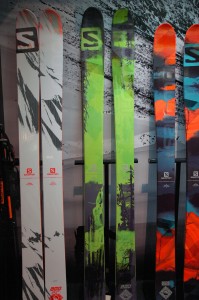 For a bit of history, the Q Series was launched for the 2013/14 season. It evolved from the continuing Rocker2 Series with two models being direct descendants. The Q-90 was formerly the Rocker2 92 with a slight tail modification and the Q-115 is he previous Rocker2 115 basically unchanged. The main design modification differentiating the Q Series from the Rocker Series are slightly flatter and stiffer tail profiles for increased directional stability and a more conventional and less surfy twin-tip style turn.
For a bit of history, the Q Series was launched for the 2013/14 season. It evolved from the continuing Rocker2 Series with two models being direct descendants. The Q-90 was formerly the Rocker2 92 with a slight tail modification and the Q-115 is he previous Rocker2 115 basically unchanged. The main design modification differentiating the Q Series from the Rocker Series are slightly flatter and stiffer tail profiles for increased directional stability and a more conventional and less surfy twin-tip style turn.
With the success of the Q Series in its first year, Salomon brings back last year’s entire lineup plus three new models for the 2014/15 season. In addition to last year’s Q-90, 98, 105, & 115 which remain unchanged except for new graphics, is the new Q-85 at the narrowest end of the spectrum, the Q-BC LAB, a new backcountry specific design, and the Q-LAB, a beefy new hard charger. All models have catchy new graphics which remain some of the classiest in the business. For 2015/16 all models remain the same except for graphics.
It’s been a long held belief by the entire SAD testing team that expert level skis had to have at least some metal for power and stability. Just like new materials and manufacturing techniques created the torsional stability that led to the wide ski revolution, we may now be witnessing another step forward where lighter materials can replace metal without sacrificing performance. To be sure, these high end skis are light, lively, nimble, responsive, and playful. Simply put, they just put a smile on your face. Get the idea? Not to mention the fact that they may also be some of the most affordable high performance skis on the market!
The Salomon Q or “Quest” Series consists of seven models for 2014/15: the Q-85, 90, 98, 105, 115, Lab, and BC Lab. The numbers coincide with the waist width in millimeters, but only for longest length in each model. To keep the sidecut shape and turning characteristics for each model consistent, the corresponding width is slightly less as the ski gets shorter.
As each model gets wider, it is targeted for deeper snow conditions. Not only does the extra width increase floatation, but the sidecut is decreased and overall rocker is accentuated. So as you progress from the Q-85 to the Q-115, the design characteristics are gradually biased away from carving toward deeper snow performance.
All models incorporate some of the very latest design technologies including hybrid rocker, honeycomb tips, and tapered tips:
The hybrid “all-mountain” rocker includes healthy traditional camber underfoot, an early rise tip, and a very gentle rise tail. This tested combination has proven to be the most effective way to span all snow conditions.
Super light honeycomb tips reduce inertia to make the ski more maneuverable and playful. Additionally, in the two widest models, there are no metal edges in the tip or tail area of the ski to provide more fluid gliding in powder and further reduce weight.
Hook Free Taper means the widest point in the sidecut tapers in toward the tip earlier for less drag and hooking in crud and powder. This is a natural follow-on design to “early rise tips” since it only makes sense to move the widest point back to the end of the the snow contact line. This not only makes the ski more directionally stable in deep conditions, but also carve more precisely on hard snow. Along with rocker, taper is accentuated in this line as the models get wider. We believe you’ll be seeing this design on most skis in the near future. It’s part of Salomon’s “5 point sidecut”, so named for the points along the ski’s shape: narrow at the tip, wide towards the front, narrow under foot, wide again towards the back and then finally narrow at the tail.
—————————————————————————————————————-
DSJ Quick Reviews:
![]() The new Q-85 is the narrowest offering in the series. Designed as primarily a frontside carver, this 80/20 ski helps extend the spectrum toward dedicated on-piste skiers. This ski actually felt like a bit of a “lightweight” and would probably be best suited to an all-mountain bump ski application. Without some metal or a beefier lay up, a ski this narrow tends to feel a bit noodly. Salomon’s popular X-Drive Series may be a better choice for laying trenches in the corduroy. That being said, the Q85 is a natural quick carver, and all the added hybrid technologies enable it to function well anywhere on the mountain from groomers, to bumps, to light crud, to park.
The new Q-85 is the narrowest offering in the series. Designed as primarily a frontside carver, this 80/20 ski helps extend the spectrum toward dedicated on-piste skiers. This ski actually felt like a bit of a “lightweight” and would probably be best suited to an all-mountain bump ski application. Without some metal or a beefier lay up, a ski this narrow tends to feel a bit noodly. Salomon’s popular X-Drive Series may be a better choice for laying trenches in the corduroy. That being said, the Q85 is a natural quick carver, and all the added hybrid technologies enable it to function well anywhere on the mountain from groomers, to bumps, to light crud, to park.
(Recommended binding: light weight Salomon Z12 or Z12 Ti)
160cm – 128/83/111 R12.1
167cm – 128/84/112 R13.6
174cm – 128/85/113 R15
181cm – 128/86/114 R16.5
![Salomon-Q-90[1]](https://desertsnowjunkies.com/wp-content/uploads/2014/03/Salomon-Q-901-150x150.jpg) The Q-90 (women’s Q-88 Lux) makes an ideal “everyday driver” and paired with some light weight bindings are just a hoot. They carve like butter with a fun 17m turn radius (@177cm). Forgiving, yet plenty of energy and pop out of the turn for a non-metal ski. With the most camber and least rocker of the original series, these skis are surprisingly stable at speed. With just enough tip rocker to provide smooth and effortless turn initiation and at 88-90mm under foot, they’re still beefy and floaty enough to handle shallow pow or off trail excursions. They are very responsive, quick, yet forgiving and great in the bumps. On a personal note, DSJ was looking to replace its frontside carver / bump skis and never expected a 90mm ski to fit that bill – they did. (Recommended binding: light weight Salomon Z12 or Z12 Ti)
The Q-90 (women’s Q-88 Lux) makes an ideal “everyday driver” and paired with some light weight bindings are just a hoot. They carve like butter with a fun 17m turn radius (@177cm). Forgiving, yet plenty of energy and pop out of the turn for a non-metal ski. With the most camber and least rocker of the original series, these skis are surprisingly stable at speed. With just enough tip rocker to provide smooth and effortless turn initiation and at 88-90mm under foot, they’re still beefy and floaty enough to handle shallow pow or off trail excursions. They are very responsive, quick, yet forgiving and great in the bumps. On a personal note, DSJ was looking to replace its frontside carver / bump skis and never expected a 90mm ski to fit that bill – they did. (Recommended binding: light weight Salomon Z12 or Z12 Ti)
Notable: Rumored to be the previous Rocker2 92 with a flatter tail.
161cm – 130/87/115 R13.6
169cm – 130/88/116 R15.5
177cm – 130/89/117 R17.4
185cm – 130/90/118 R19.5
The Q-98 (women’s Q-96 Lumen) is your quintessential western “one ski quiver”. This has been our “go to” ski for two seasons now, and has yet to let us down. In the uber-popular 95-100m underfoot category, it does everything well, anywhere on the mountain, and in any conditions. The 19m turn radius is tight enough to rail some quick arcs on the corduroy, yet still provide directional stability in crud or chopped pow. This model in particular garnered many industry awards in its first year. Note: DSJ just finished four days at Whistler and everything it had to dish out with this ski handling it all. While the Q-105 may have been better suited to the truly big mountain conditions, the Q-98 came through everything from early morning corduroy to knee deep untracked and boot deep slush and ice like a pro. (Recommended binding: Salomon STH12)
Notable: 156cm model eliminated for 14/15.
(156cm – 125/94/111)
164cm – 128/95/114 R18.4
172cm – 131/96/117 R18.8
180cm – 134/97/120 R19.2
188cm – 137/98/123 R19.6
Skiing the Salomon Q-98 from Fritzski on Vimeo.
If you want a serious big mountain machine that’s more like a jet fighter than a tank, the Q-105 or women’s Q-103 Stella (Mountain Magazines Women’s Ski of the Year) fits the bill. I’t’s a “hero maker” in deep, chopped, tight, or all of the above. With its accentuated rocker, the Q105 will handle “knee deep” like a true fatty, but still be super nimble in the trees and lay down a rail on the corduroy. It’s advertised as a 23m turn radius, but feels considerably tighter. The floatation of this ski is amazing and goes beyond its width. A combination of incredible quickness and maneuverability makes it great in the chowder bumps and may be the best tree ski anywhere. It took about half a day to gain the confidence, but felt like much of the quickness is due to the fact that the design allows you to stay very forward and aggressive in deep chopped conditions and never feel close to going over the handlebars. (Recommended binding: STH13 WTR)
Notable: Only the Q-105 and Q-LAB models have exactly same turn radius in all lengths.
167cm – 127/102/119 R23.3
174cm – 130/103/122 “
181cm – 133/104/125 “
188cm – 136/105/128 “
The Q-115 will slay the deepest pow, yet still be very friendly once the untracked is gone and you’re in the chopped, crud, and fluff bumps. Very versatile for a ski this wide. It only comes in 10cm increments (we would prefer 7-8cm increments like the rest of the lineup), but given its lightness and accentuated rocker, it skis short. So if you’re caught between sizes, don’t be afraid to go a bit longer for even better deep snow float and stability. (Recommended binding: STH13 WTR)
Notable: Only three sizes in 10cm increments – tip and tail width remain constant while only the waist width increases with length. Turn radius is tight for such a wide ski (tighter than the narrower Q-105), but keep in mind that modern heavily rockered “5 point” designs skew this specification, since any sidecut is over such a shortened contact length. For example, the similar Rossi Super 7 is the same and the Armada JJ is even tighter.
168cm – 139/111/131 R14
178cm – 139/113/131 R16.4
188cm – 139/115/131 R21
The new Q-BC LAB is designed specifically for lightweight back-country touring efficiency. That being said, there’s nothing stopping this ski from also being an inbounds dream. With emphasis kept on downhill performance, this ends up being a very refined Q-115. The materials include the finest hand-picked wood and carbon fiber. It does come at a price however, and this model is noticeably more expensive than the rest of the line-up. The dimensions are very similar to the Q-115, with a longer turn radius and a more turned-up tip being the biggest differences. These designs are likely targeted to easier skinning and then ripping through varying back-country conditions as opposed to on-piste carving performance. The Q-BC only comes in two sizes, but easily fit the bill for back-country purposes. (Recommended binding: Guardian MNC 13 or 16)
(New model, demo review pending)
Notable: The only models with significant overlap are the Q-BC and Q-115. It wouldn’t surprise us to see Salomon eventually drop the Q-115.
176cm – 140/114/128 R21
184cm – 141/115/129 R24
![]() Finally, the new Q-LAB is the complete exception to the rest of the lineup. The guys up at Salomon USA in Ogden refer to this ski as the Q-105 on steroids. About the same width and shape as the Q-105, but a completely different animal. It not only has metal, but two layers of it. No pussy cat here. This thing is designed on their race ski chassis and built for business. Much heavier than the rest of the lineup, it’s a departure aimed at top level experts and big mountains. We found it to ski and feel lighter than its weight. For 104mm underfoot, it felt very balanced, smooth, and solid on scratchy late day groomers, and of course felt even more at home in the crusty ungroomed on demo day. Where the rest of the line is known for playful quickness, this ski is meant for speed and stability in steep gnarly conditions, but still arcs easily with a healthy turn radius for a wide ski. We were very impressed, and this would be our first choice in the line-up for big mountain conditions where bumps and tight trees are few, but wide open terrain, cut up bowls, and heavy snow are the norm. (ie. Jackson, Whistler, et al) (Recommended binding STH WTR 16)
Finally, the new Q-LAB is the complete exception to the rest of the lineup. The guys up at Salomon USA in Ogden refer to this ski as the Q-105 on steroids. About the same width and shape as the Q-105, but a completely different animal. It not only has metal, but two layers of it. No pussy cat here. This thing is designed on their race ski chassis and built for business. Much heavier than the rest of the lineup, it’s a departure aimed at top level experts and big mountains. We found it to ski and feel lighter than its weight. For 104mm underfoot, it felt very balanced, smooth, and solid on scratchy late day groomers, and of course felt even more at home in the crusty ungroomed on demo day. Where the rest of the line is known for playful quickness, this ski is meant for speed and stability in steep gnarly conditions, but still arcs easily with a healthy turn radius for a wide ski. We were very impressed, and this would be our first choice in the line-up for big mountain conditions where bumps and tight trees are few, but wide open terrain, cut up bowls, and heavy snow are the norm. (ie. Jackson, Whistler, et al) (Recommended binding STH WTR 16)
Notable: For those that considered this line of skis just too light and playful to be taken seriously, here’s your answer…
176cm – 135/103/124 R20.5
183cm – 138/104/127 R20.5
190cm – 145/109/134 R20.5
——————————————————————————————————————
Quiver Recommendations:
“One Ski”: Frontside East – Q-85
West – Q-90
West 50/50 – Q98
West Big Mountain – Q105
“Two Ski”: West – Q90 & 105
West Big Mountain – Q98 & 115
——————————————————————————————————————
BINDING MOUNT LOCATIONS
The 2013/14 Q-98 thru 115 model factory lines are a bit forward compared to most skis. This despite their bais toward deeper snow and accentuated tip rocker pulling the front contact point progressively rearward. We are suspicious that this may cause slightly under-loaded rear edge pressure and be the reason for occasional tail chatter on very hard snow experienced with these models. DSJ is currently experimenting with binding location and hopes to possibly fine tune carving balance without losing the incredible agility.
4/14: Just got off the phone with our Salomon source, and they are indeed moving the factory recommended lines back for their 13/14 Q98-115 models. How much, they weren’t sure. They did also caution that placement of the top sheet during the manufacturing process can result in up to .5 cm variation between skis. So if your’e serious about binding placement, measure for true center. We’ll attempt to come up with recommended location based on true center as things come together early next season.
9/14: The results are in, and Salomon has moved the position back about 1cm on the Q-105 and 2cm on the Q-115. The Q-98 is unchanged (???).
11/16: On the QST-106 they tweaked the factory line back another millimeter and the front of the ski has more surface area than the Q-105, so it should be just about perfect. The line on the QST-99 has also been moved back and is now right on the money.
DSJ recommended binding mount locations:
Q-85 : factory line
Q-90 : factory line
Q-98 : 1cm aft of factory line for all years
QST-99: factory line
Q-105: 1.5cm aft for 13/14
.5cm aft for 14/15 & 15/16
QST-106: factory line
Q-115: 1cm (all-mtn) or 2cm (powder) aft for 13/14
factory line for 14/15 & 15/16
Q-Lab: factory line
* If you want to check the accuracy of the factory line, check pg 46 of the 14/15 Salomon Shop Certification Manual (15/16 same). (To use a common tape measure, use this cm to inches converter)
——————————————————————————————————————
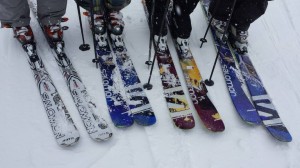 As a note, the Q90, 98, and 105 models were extensively demoed by DSJ at both Jackson Hole and Vail by groups of five or six of us. Other skis demoed were the Rossi 7 and Experience Series, Dynastar Cham Series, Head Rev Series, and a few other various skis. Some of these were good and some not so much, but the Q Series were the unanimous favorites. Check out a similar review on this Euro blog.
As a note, the Q90, 98, and 105 models were extensively demoed by DSJ at both Jackson Hole and Vail by groups of five or six of us. Other skis demoed were the Rossi 7 and Experience Series, Dynastar Cham Series, Head Rev Series, and a few other various skis. Some of these were good and some not so much, but the Q Series were the unanimous favorites. Check out a similar review on this Euro blog.
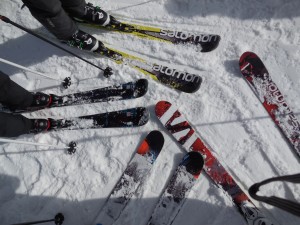 Finally, keep in mind, except for the Q-LAB, we’re not talking “hard chargers” here. These are Terriers, not Bulldogs. Stay aggressive and forward to get the most out of them. They do have a speed limit and the wider models can chatter on very hard pack or ice, but that’s to be expected from skis with no metal. If you’re looking for wide open GS chargers or high speed straight line pow killers, the Q-LABs may be your choice. Metal has its place for stability at high speeds or in moist heavy conditions, but it can also be cumbersome and a bit of a “fun” killer.
Finally, keep in mind, except for the Q-LAB, we’re not talking “hard chargers” here. These are Terriers, not Bulldogs. Stay aggressive and forward to get the most out of them. They do have a speed limit and the wider models can chatter on very hard pack or ice, but that’s to be expected from skis with no metal. If you’re looking for wide open GS chargers or high speed straight line pow killers, the Q-LABs may be your choice. Metal has its place for stability at high speeds or in moist heavy conditions, but it can also be cumbersome and a bit of a “fun” killer.
And just a heads up here – retailers often mistakenly market a ski’s performance level according to its width. In other words, a Q-105 is not more “expert” than a Q-90 and may be a poor choice in conditions where the Q-90 shines. Width really determines a ski’s intended use. A narrow race ski will fare poorly in powder while excelling on hardpack and vice-versa. Materials, layup, and design determine a ski’s performance level and skis of all widths can range from intermediate to expert. Buy a ski based on the conditions you think you’ll use it in the most and this Salomon Quest line certainly has you covered.
Finally, you may or may not see these skis at the top of any big ski magazine test, but keep in mind that the average tester is a semi-pro skier. They generally favor very powerful skis and what’s best for them is not necessarily what’s best for you. We feel these skis are ideally suited to the expert skier who still has to drive to the mountain, favors finesse over speed, trees over cliffs, powder eights over kamikaze lines, and would rather dance with the mountain than crush it.
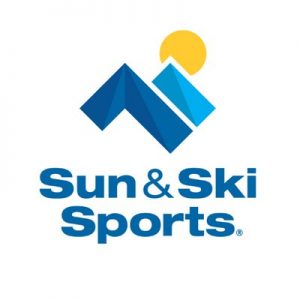
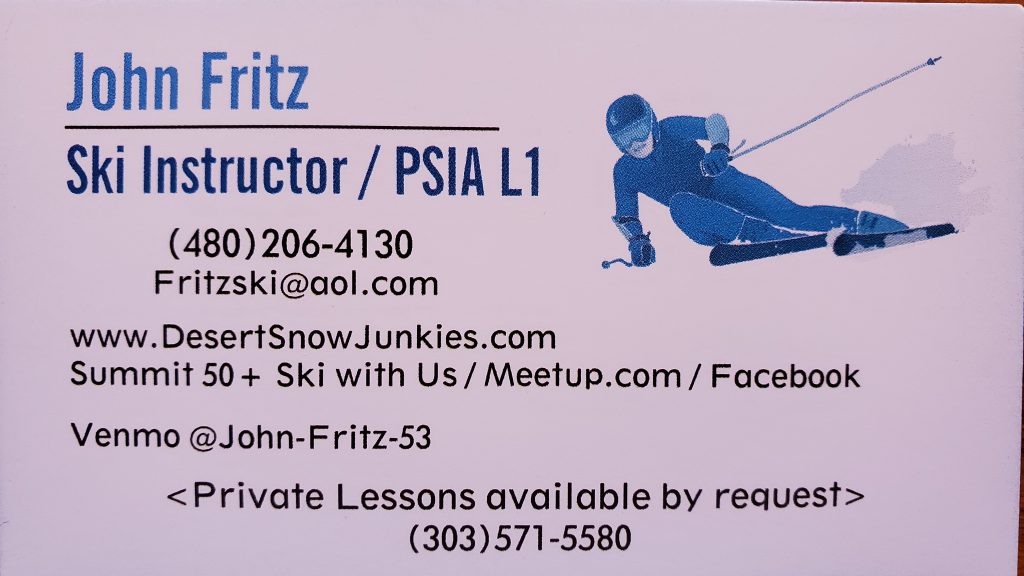


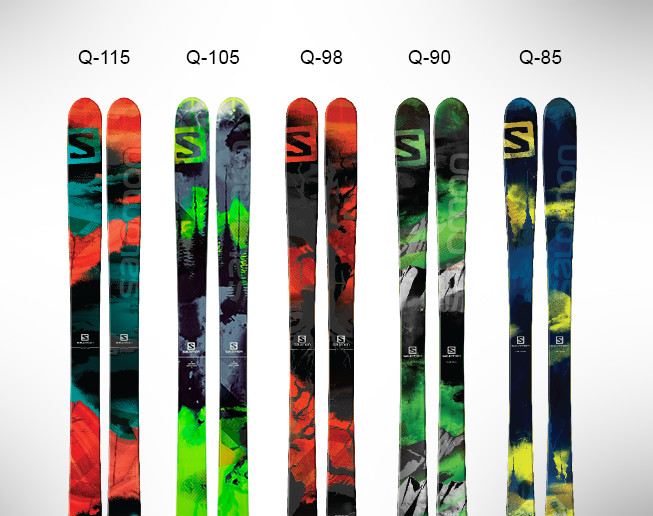

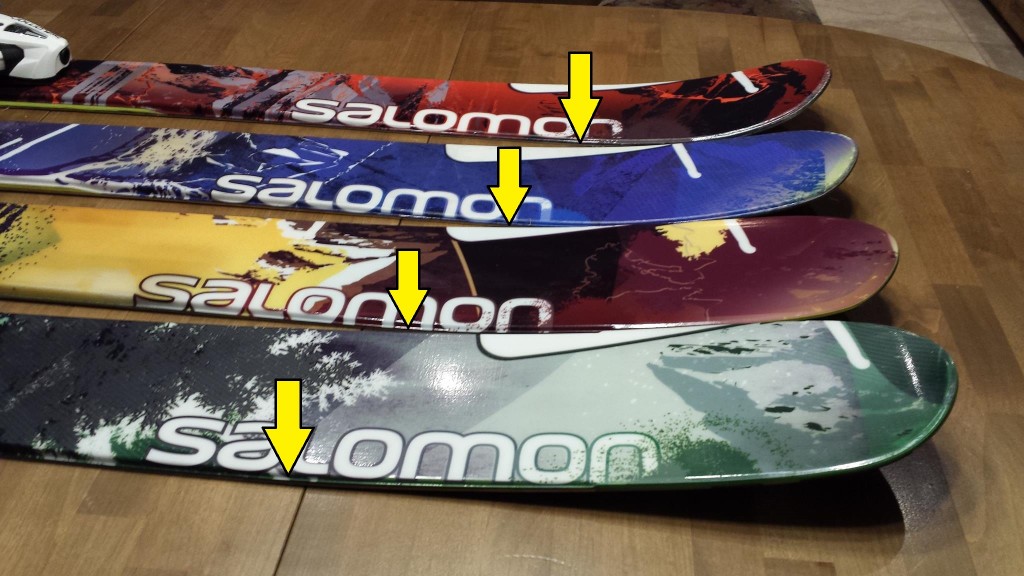
![2014-salomon-q98-300[1]](https://desertsnowjunkies.com/wp-content/uploads/2014/03/2014-salomon-q98-3001-150x150.jpg)
![2014-salomon-q105-600[1]](https://desertsnowjunkies.com/wp-content/uploads/2014/03/2014-salomon-q105-6001-150x150.jpg)
![salomon-q-115-skis-2014-top[1]](https://desertsnowjunkies.com/wp-content/uploads/2014/03/salomon-q-115-skis-2014-top1-150x150.jpg)
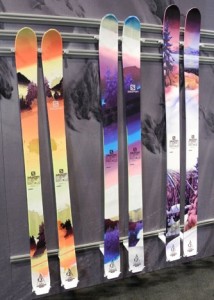
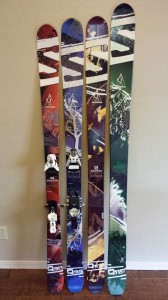



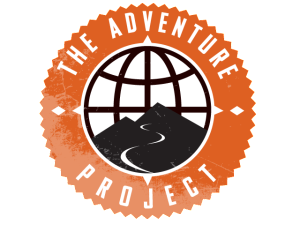

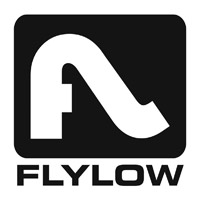
Hi John, Just skied my 98’s at the Beav with 9 new inches. K’nA bubbba! Fun with a capital F. I agree with your assessments and I am looking to expand my Salomon line!
BT
Kaint wait to ski my new Q90s with you guys!!
Other reviews have tried moving the bindings back a cm or two, but felt the ski was “off” when doing so….any updates on the binding mount position? I just got a pair of last year’s q98’s and was wondering if I should move them back a bit…..
When you first stand on the 98 or 105 your eye will catch the lack of ski in front of your boots and they feel a bit funky at first. I adjusted quickly, loved the quickness, and fell in love. Only on very hard snow would the tails wash out. I moved back 2cm on my 98s and had four days on them at Whistler. Very little hard snow, but they felt awesome and very balanced carving on groomers. This was all at the end of last season, so no chance to investigate further till I can get back out there.
Hello, what bindings (w brake width) do you recommend with the Stella 103s. I like the Salomon Sth wtr 13, but I can’t figure out which size to order (100 or 110)
I mean 115 – not 110
Erin, You’re kind of stuck in a tough spot. With Salomon you have a choice of either 100 or 115 brake sizes. The Stella in 158cm length is 101mm wide and 165cm is 102mm wide. Its very close and a 100 brake might just fit or you could have your shop slightly bend them outward (I’ve had that done before and worked fine). If you want to be sure, just go with the 115s.
Any idea when the Q85 will be demo reviewed. I’m looking to buy – mostly east coast. Trees preferred terrain but occasionally on groomers. Will demo Q90 asap, but wondering if Q85 might be better fit.
Matt, I’m hoping to get on a pair very early this season and will post a review ASAP. In the meantime, keep looking around on some of the big forums like EpicSki, TGR, and NewSchoolers and you might find some good reviews.
Just got my Q85s w/ STH12 binding here on the east coast. I took them to Blue Mt. and Camelback in the Poconos. I really like these skis so far. I was having some issues with chatter at high speeds and was afraid it was the skis, but I just needed to make a boot adjustment. These skis are very floaty and easy to maneuver at all speeds. I had lots of admirers on the lifts; the art is sexy. It took some time to get used having more ski in the back as the bindings are mounted in the center. I don’t even notice it now though. I can’t wait to get these in some powder in Vermont. Looking forward to your review!
Thanks Brett. Glad you’re enjoying them!
I’m going to mount a new pair of the 2014-2015 Q-98s that I recently picked up. Would you still recommend mounting those 1cm back based on your subsequent experiences? Do your skiing compadres concur? I am a lightweight intermediate skier who will mainly be on piste in Lake Tahoe but might be backcountry if I get good enough one day ;)
These are my first skis so just trying to get as many details as I can right! Thanks!
Matthew, yes I would definitely recommend 1cm aft. To be truthful, it’s not very much to begin with and if you say you’re lightweight and going with a length shorter than 180cm, you could even go down to @8mm or so. Whatever you decide, measure and mark the skis yourself – don’t leave it up to the shop. Blue painters tape works really well.
Liked your reviews here. Much more concise with good info. 61 year old former freestyler. Was worried about buying Q90 (did not want intermediate ski ) but assured now. Trying them at Breck tomorrow, Thanks for good info, rather than most sites BS.
Thanks William. Hope you like them. My new home mountain is Breck and for a one ski quiver on a big mountain like this, I would recommend the Q-98s, but the 90s are fun on groomers and in the bumps and will still get you around the mountain. Plus, if you can, I’d wait for next year’s models. They are putting just a bit of metal in all the models underfoot and the advance reviews are awesome.
Just wondered….I had a client that demoed the Stella 101 2013-14 Model this year. She liked them and wanted to buy them. of course they are all out of stock. is the Stella Q 103 in the 158cm the same model?! All the dimensions add up. Thanks
Chris, as far as I know, it was also the Stella 103 as far back as 2013/14 and remains unchanged through 15/16. Good luck!
Great info here. Just trying to find the binding mount location for Q98 180cm. Recall the tail to line distances used to be in the Shop Practice manual / technical manuals but can’t find the equivalent of page 46 as referred to above. Downloaded the 14/15 manual and no info? Grateful for a pointer.